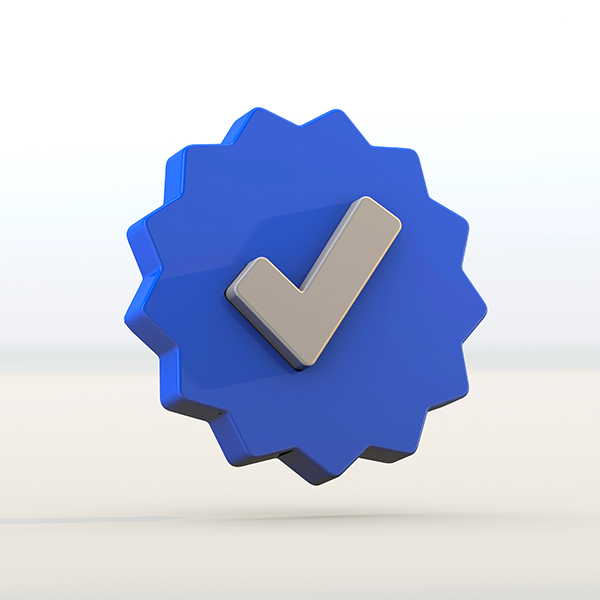Social media is no longer optional for businesses, it’s essential. But with so many platforms available, how do you know which social media channels are right for your business? The truth is, not every platform will serve your goals or reach your audience effectively.
To build a successful strategy, you need to be strategic. That means understanding which social media platforms for business align with your brand, your audience, and your objectives. Here’s your updated 2025 guide to making the right choice.
Does my business need to be on every social media platform?
No, it’s not necessary for your business to be on every platform. While it might seem like a good idea to “be everywhere,” spreading yourself too thin wastes time and resources. Instead, focus on where your audience is active and what each platform is best suited for.
Each network serves a different purpose and caters to a specific user base. For example, LinkedIn users are in a very different mindset than those scrolling through TikTok. The key is to show up where your customers are, and where your content will resonate.
Top social media platforms for business in 2025
Here’s a breakdown of the leading social media platforms for businesses, and our expert tips on how to use each one effectively.
Best for: Community building & multi-generational reach
Facebook remains a powerhouse in 2025, with over 3 billion monthly active users globally. From Millennials to Boomers, the platform covers a broad demographic spectrum. It’s ideal for building communities, nurturing customer relationships, and sharing updates in a more personal, conversational way.
While organic reach has decreased, Facebook still offers powerful tools for businesses, especially through Facebook Ads. If you’re looking to reach highly targeted audiences through paid social, we can help you run strategic campaigns that deliver real results.
Our tip: Use Facebook Groups, Live video, and Messenger to boost engagement and offer customer support in real-time.
Best for: Visual branding & product promotion
Instagram is the go-to platform for visual-first brands. Think fashion, food, beauty, travel, and lifestyle. Reels, Stories, and carousel posts are perfect for showing off your brand personality and products in action.
In 2025, Instagram continues to thrive with Gen Z and Millennials, especially when it comes to influencer marketing and trend-driven content. If your business is big on aesthetics, this is your playground.
Our tip: Tap into Reels and trending audio to boost discoverability.
Best for: B2B marketing & thought leadership
LinkedIn has evolved beyond a simple networking site. It’s now a full-scale B2B marketing platform, making it one of the top social media platforms for business in professional services, SaaS, tech, and recruitment.
It’s perfect for lead generation, sharing insights, and positioning your brand as a thought leader. LinkedIn Articles and company updates allow you to build credibility and nurture a professional audience.
Our tip: Use LinkedIn Ads to target by job title, industry, and company size for ultra-specific B2B campaigns.
TikTok
Best for: Reaching Gen Z & going viral
TikTok isn’t just for dances and memes anymore. In 2025, it’s a major driver of social commerce, entertainment, and brand discovery, especially among Gen Z and young Millennials.
Brands that succeed on TikTok focus on fun, raw, authentic content that connects emotionally.
Our tip: Hop on trends quickly, and show the human side of your brand through behind-the-scenes or day-in-the-life videos.
YouTube
Best for: Long-form content & SEO visibility
As the world’s second-largest search engine (after Google), YouTube is a no-brainer for businesses looking to boost visibility through video content.
How-to guides, product demos, testimonials, and behind-the-scenes content all perform well. YouTube content also drives long-term SEO benefits, making it a smart investment for evergreen content marketing.
Our tip: Optimise your video titles, descriptions, and thumbnails to boost click-throughs.
X (Formlery Twitter)
Best for: Real-time updates & customer service
Despite rebranding to “X,” the platform still functions largely like Twitter, fast-paced, concise, and conversation-driven. It’s not ideal for every business, but it is great for live updates, industry commentary, and managing customer queries quickly.
Our tip: Use X to listen to customer feedback and join industry conversations in real time.
Snapchat
Best for: Exclusive content & customer loyalty
Snapchat continues to hold strong among younger users in the UK. The platform is excellent for building exclusivity. Limited-time offers, behind-the-scenes content, and geofilter promotions help create a “club-like” feel.
While it’s not for every business, Snapchat is a great choice if your audience is young and you want to drive brand loyalty through authentic, short-lived content.
Our tip: Use private stories and direct snaps to create VIP-style engagement with your audience.
Best for: Product discovery, home, lifestyle, fashion, & food
Pinterest is a strong driver of traffic and purchase intent, especially for female-skewing audiences. It’s ideal for ecommerce brands with highly visual products. Pins are long-lasting and searchable—making it a valuable SEO-adjacent platform.
Our tip: Optimise your Pins with keyword-rich titles and descriptions to boost visibility in Pinterest’s search engine. Use vertical, eye-catching images, and always link directly to a product or relevant page to increase website traffic and sales.
Threads (by Meta)
Best for: Brand conversation & community-building
As Meta’s answer to Twitter/X, Threads is gaining momentum in 2025. It’s text-based, but unlike X, it’s tied into Instagram’s ecosystem, meaning a shared audience and easier account growth. Early adopters are using it to share brand thoughts, engage in discussion, and show brand personality without the chaos of X.
Our tip: Use Threads to post quick updates, industry takes, and behind-the-scenes moments. It’s ideal for showing the human side of your business.
Final thoughts: How to choose the right social media platforms for your business
Choosing the right social media platforms for business depends on three things:
- Where your audience is active
- What type of content you can consistently create
- Your business goals; brand awareness, lead generation, sales, or customer loyalty?
Start with one or two platforms and grow from there. Prioritise quality over quantity. And if you’re looking to supercharge your visibility our team of social media experts can help you launch and manage high-performing ad campaigns that convert.
Want to take the guesswork out of social media? Let’s talk. Get in touch with us to discuss how we can grow your brand through smart, strategic social media advertising.
Social media platforms for businesses: FAQs
What is the best social media platform for my business?
The best platform depends on your target audience and goals.
For B2B, LinkedIn is ideal, for visual products, try Instagram or Pinterest. For broad reach and community building, Facebook is still highly effective.
How many social media platforms should my business be on?
Quality beats quantity. Start with 1–3 platforms where your audience is most active. Focus on consistent content and engagement before expanding to more channels.
Is Facebook still relevant for business in 2025?
Absolutely. Facebook remains a key platform for reaching multiple demographics and running effective ad campaigns. It’s especially powerful when combined with targeted advertising.
Should I use TikTok for my business?
If you’re targeting Gen Z or Millennials and can create short, engaging videos, TikTok can be a great platform for visibility and brand growth, even for non-creative brands.
Is it worth investing in social media ads?
Yes, especially on platforms like Facebook, Instagram, and LinkedIn. Paid ads allow you to target specific audiences, boost reach, and drive measurable results. (We can help with that!)
How often should my business post on social media?
It varies by platform, but consistency is key. Aim for at least 3–5 posts per week on your main channels. Focus on quality content that adds value to your audience.





